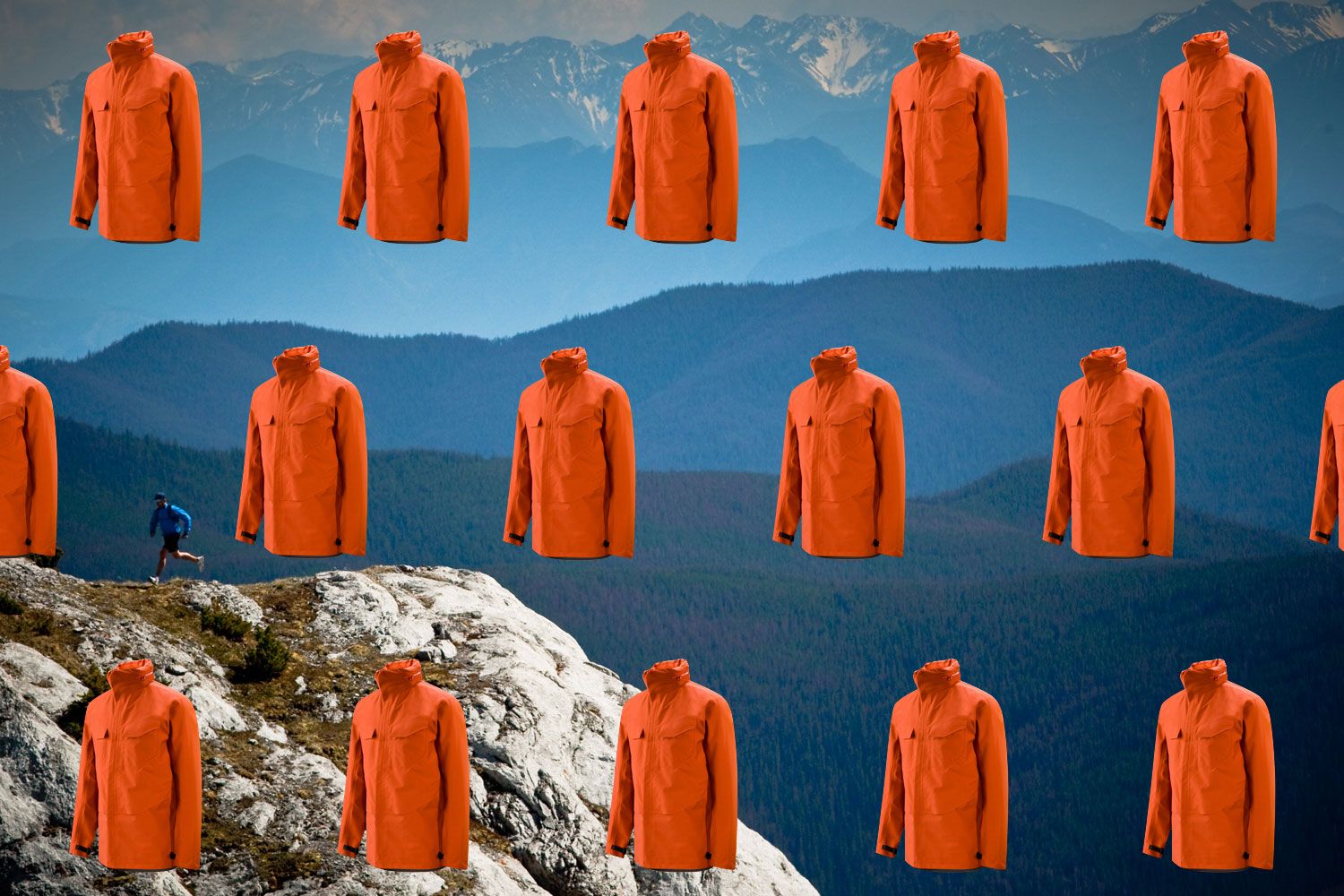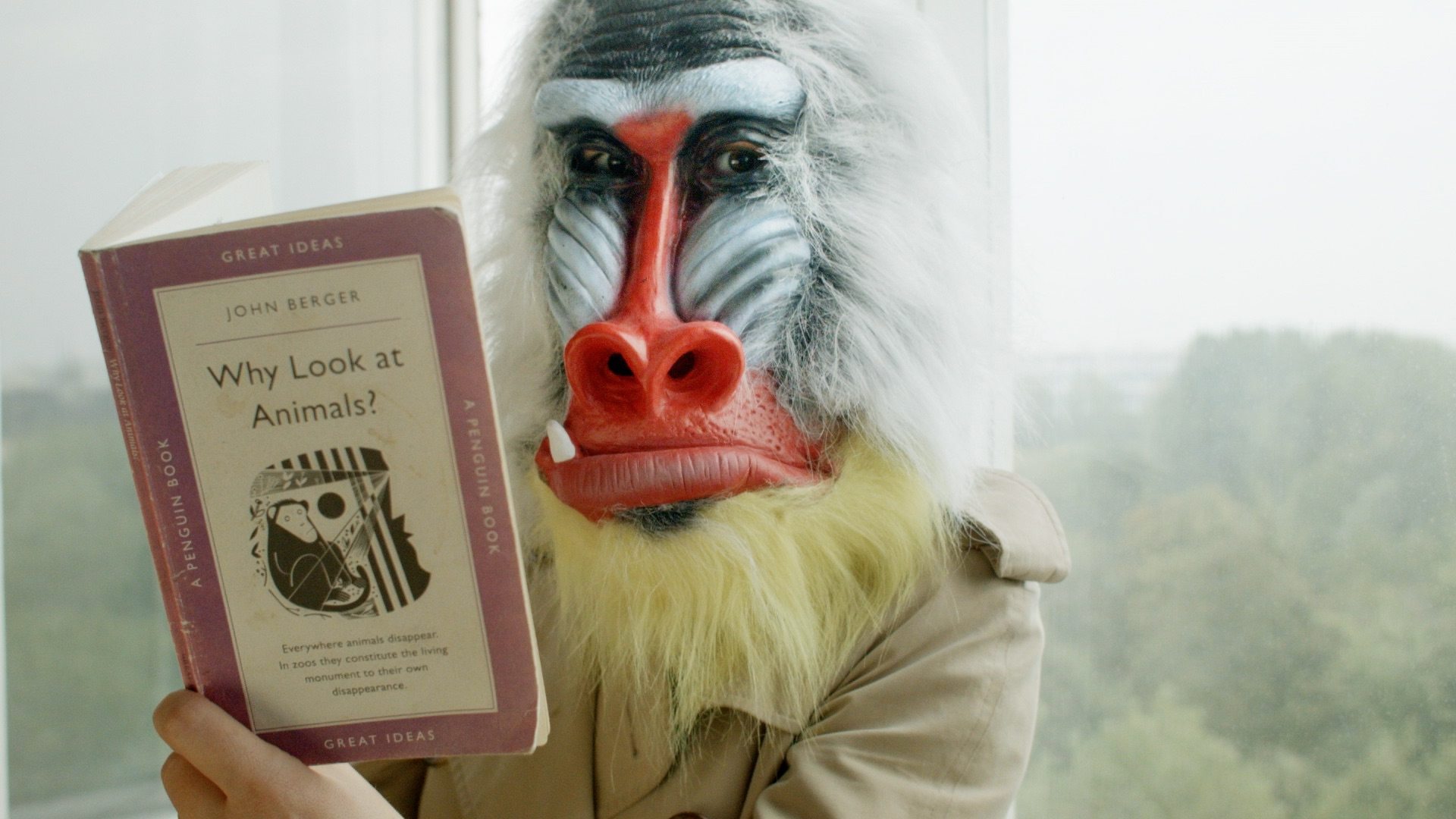Protect Us From Ourselves: Hansjörg Sahli’s Swaddled Rhône Glacier
|Philip Maughan
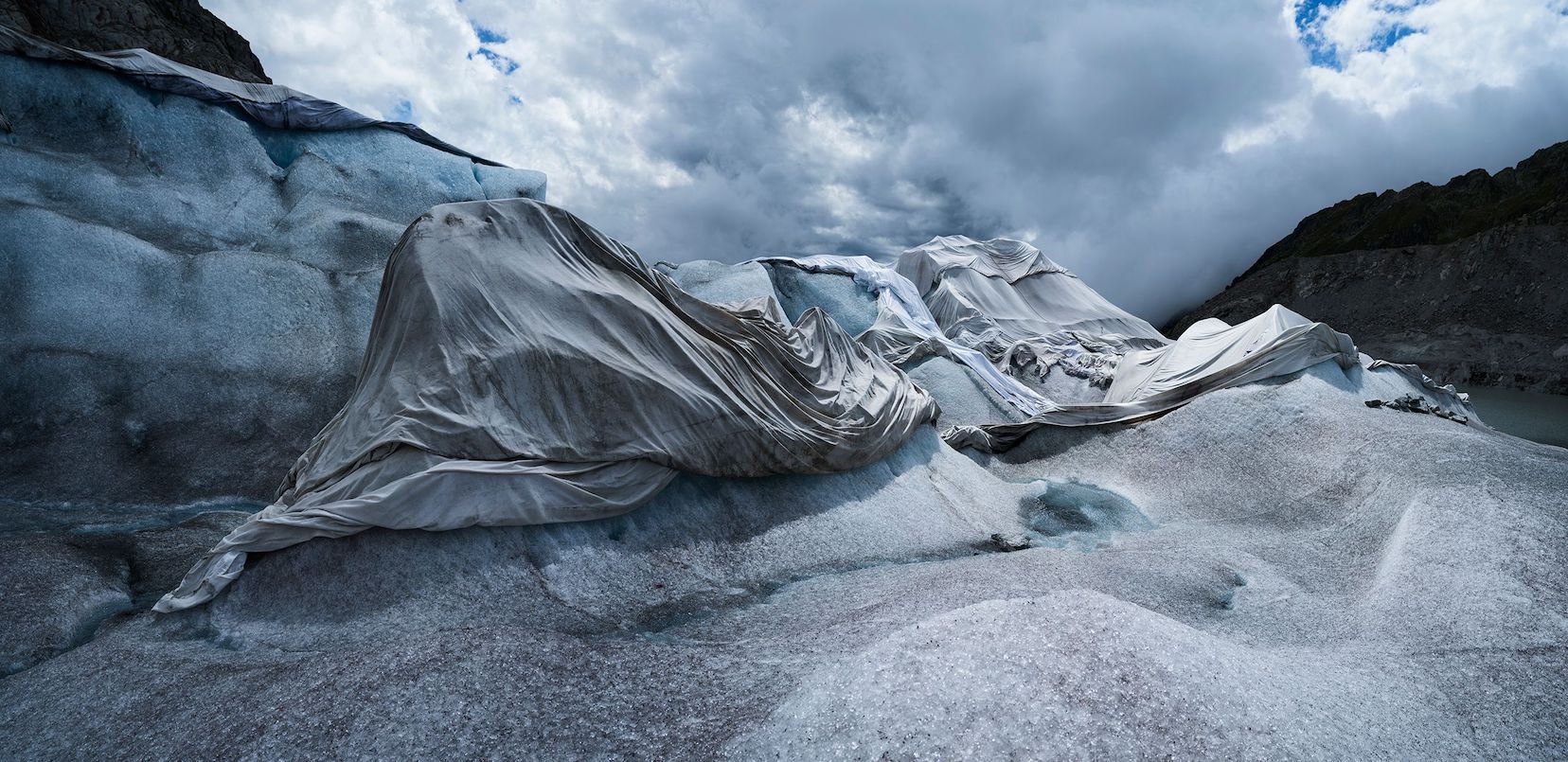
Glaciers are the largest source of freshwater on Earth. Colossal wedges of compacted snow and ice that are moving – glacially – forming and then collapsing under their own weight. When human activity produces rapid warming in the climate, increasing precipitation and disrupting local cloud cover, time accelerates. An incremental flow of ice becomes a rush of water, and all manner of things come tumbling down.
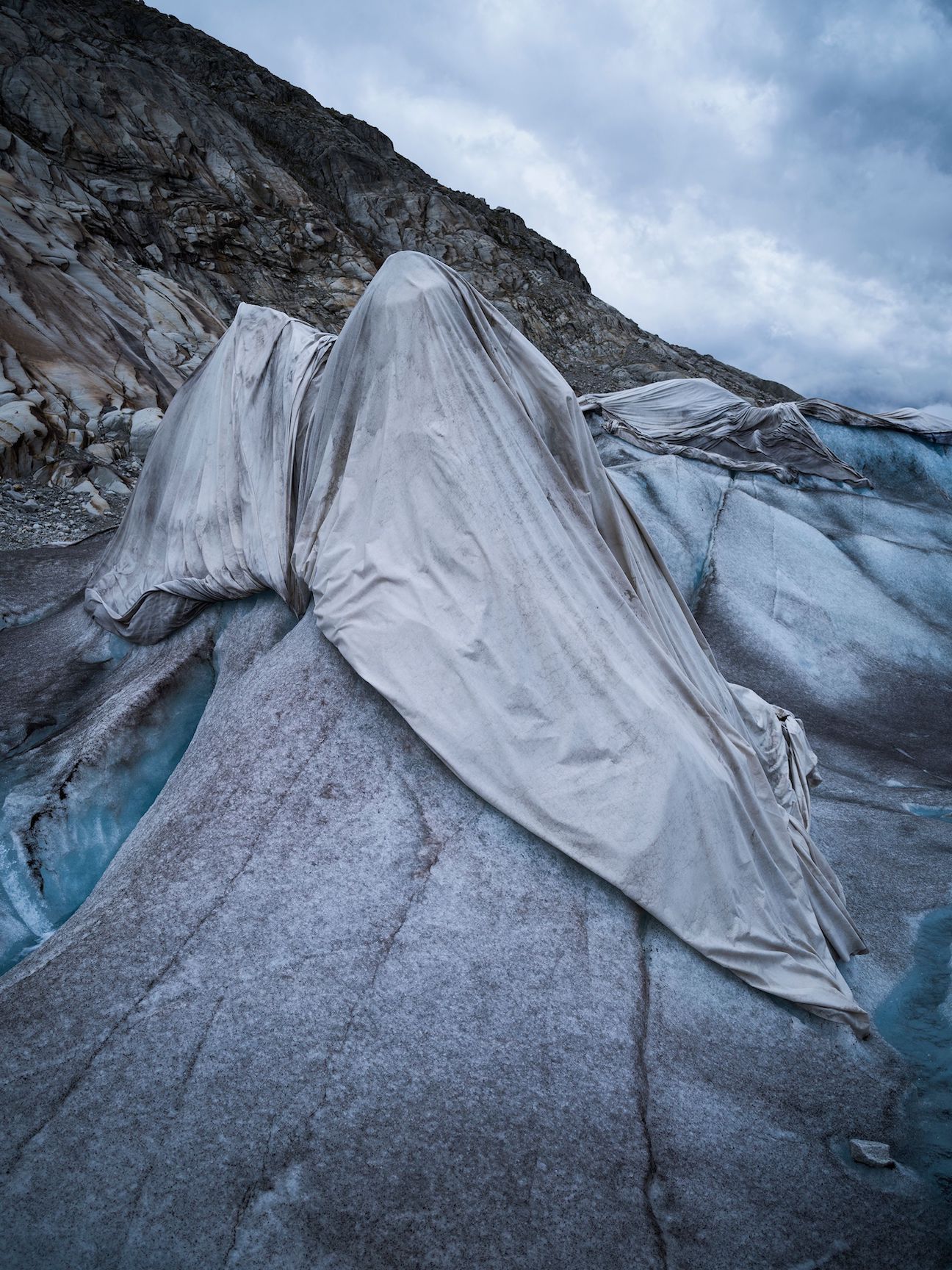
In 2017, the bodies of a married couple, Marcelin and Francine Dumoulin, were recovered from the Tsanfleuron Glacier in Switzerland – 75 years after they disappeared. The pair’s daughter, 79-year-old Marceline Udry-Dumoulin, wore white to their burial in August – a symbol of ice, but also of hope, she said. As glaciers around the world go into retreat – and they are at a terrifying rate – landscapes that were once meadowland, cryogenically frozen 2.6 million years ago, thaw out, absorb the sun, and spring green again, wreaking havoc on the plants, animals, and people who rely on the meltwater.
To the northeast of Tsanfleuron lies the Rhône Glacier, source of the Rhône River, which gushes into Lake Geneva 3,258 meters below. Since 2008, every spring, the citizens of nearby Obergoms have been laying UV-resistant blankets on the glacier, swaddling the vulnerable giant during the summer months. During two trips in 2018, photographer Hansjörg Sahli documented the practice, recontextualizing it as a form of Land Art in the process. “When I came back a fortnight later, everything looked different,” Sahli recalls of the Christo-like coverlet having lost its shine. “There had been a storm and lots of rain. Some of the blankets were torn off, shredded, dirty. The glacier was a pitiful sight.”
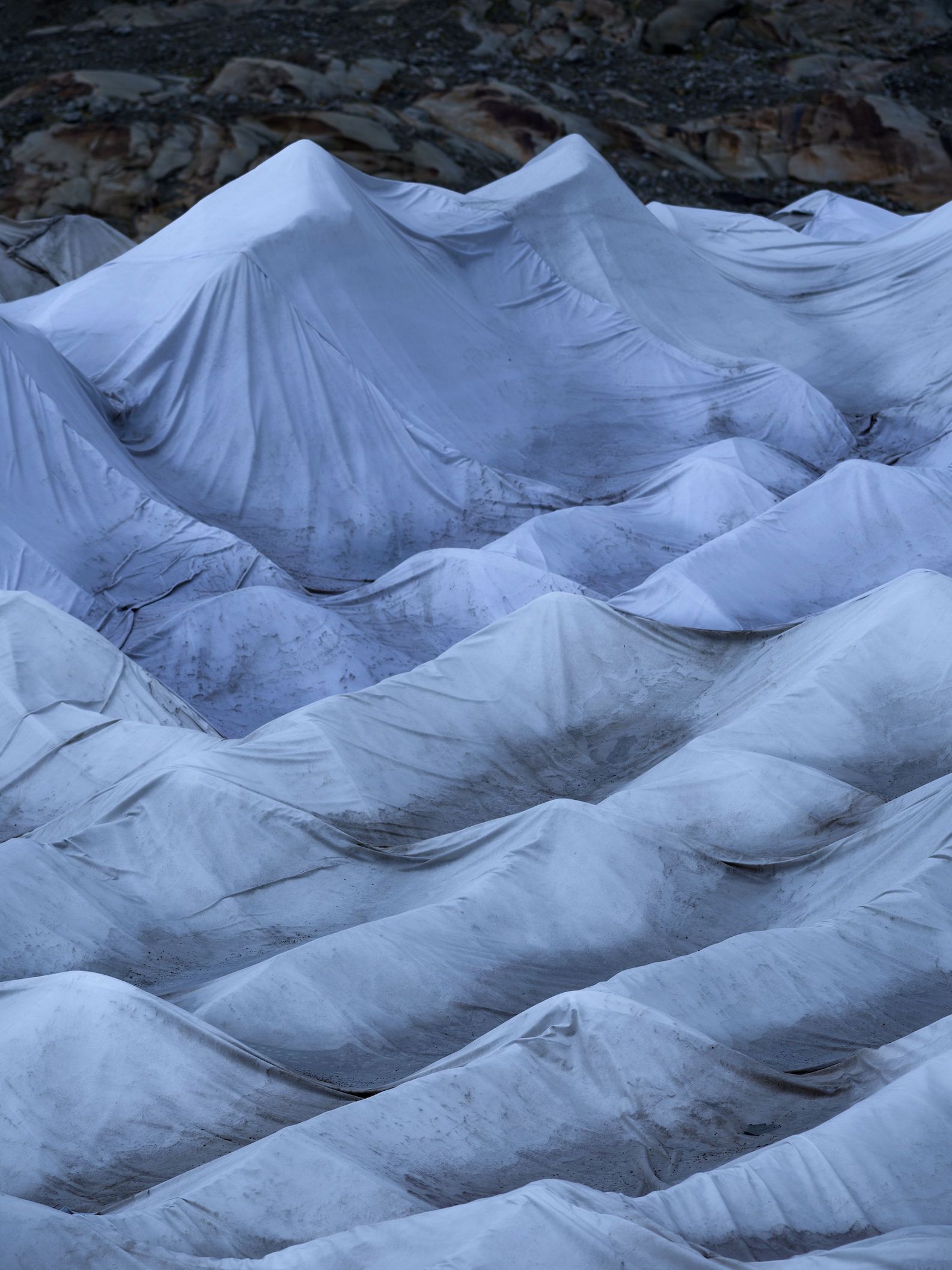
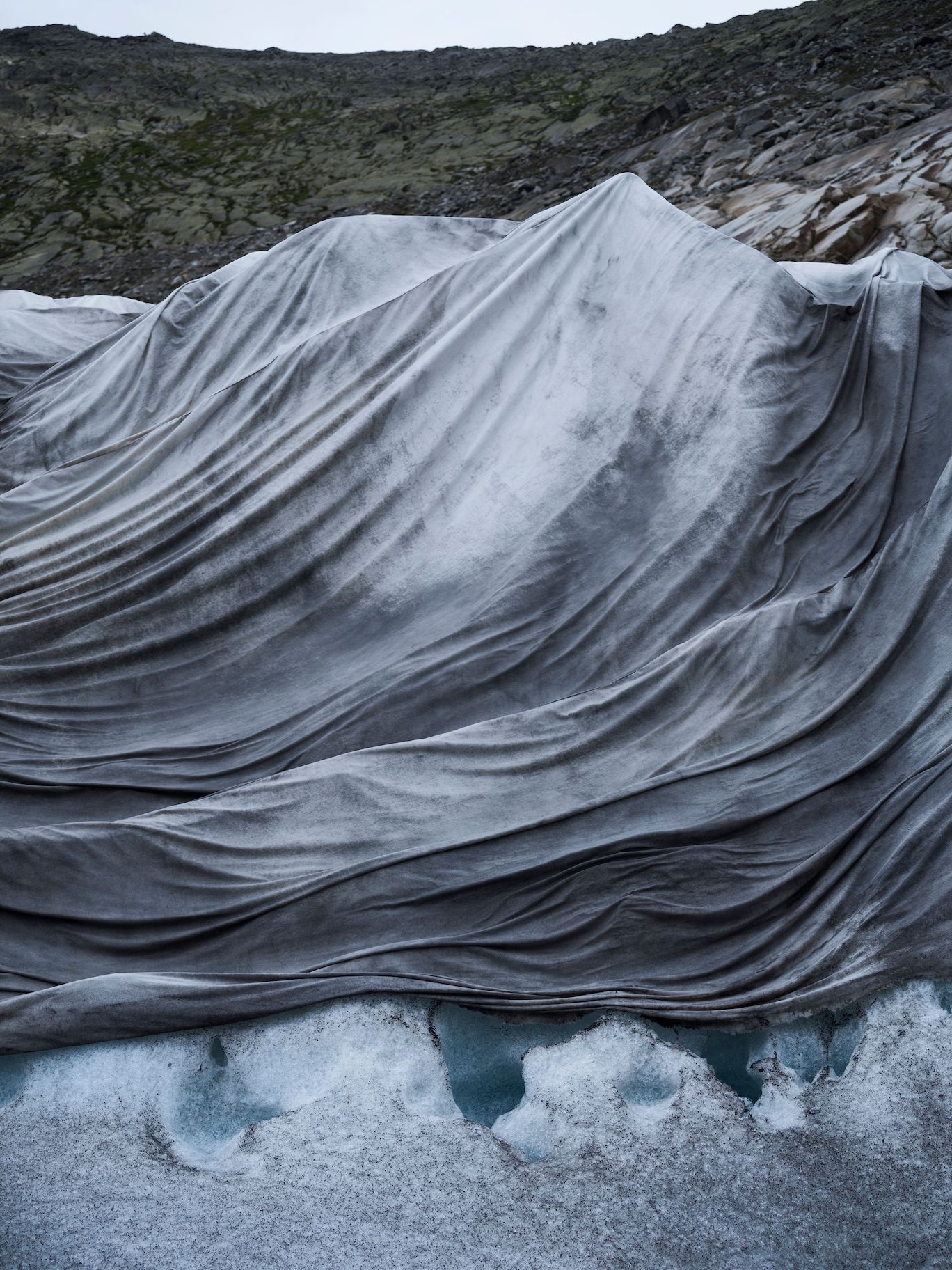

The effort is a patch, after all, not a cure – and it was tourism, not environmentalism, that motivated the blanketing to begin with. At the center of the glacier lies a 100-meter-long grotto carved out of the thick electric blue ice. Visitors can walk through this popular attraction, which supports a small Alpine economy of hotels, souvenir shops, and restaurants. It’s the perfect illustration of the self-destructive paradox of travel: we love to look at ruins, without considering too deeply how they got there, or how our gaze might affect them.
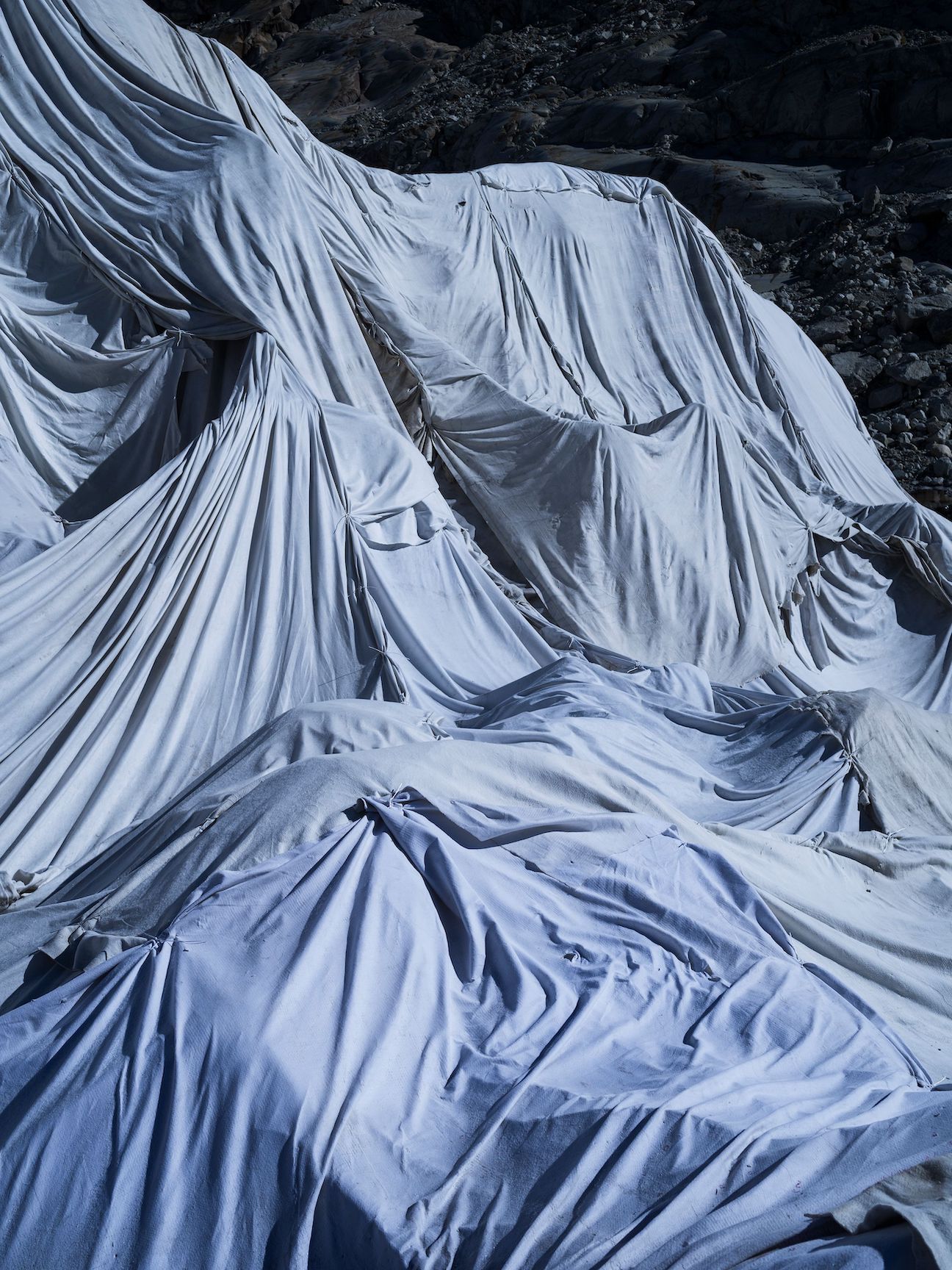
Hansjörg Sahli’s Rhone Gletscher is published by Edition Patrick Frey (Zurich, November 2018).
Credits
- Photos: Hansjörg Sahli
- Text: Philip Maughan
